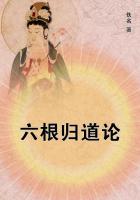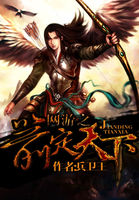1. The Expulsion of Embodied Evils
THUS far we have dealt with that class of the general expulsion of evils which I have called direct or immediate. In this class the evils are invisible, at least to common eyes, and the mode of deliverance consists for the most part in beating the empty air and raising such a hubbub as may scare the mischievous spirits and put them to flight. It remains to illustrate the second class of expulsions, in which the evil influences are embodied in a visible form or are at least supposed to be loaded upon a material medium, which acts as a vehicle to draw them off from the people, village, or town.
The Pomos of California celebrate an expulsion of devils every seven years, at which the devils are represented by disguised men. Twenty or thirty men array themselves in harlequin rig and barbaric paint, and put vessels of pitch on their heads; then they secretly go out into the surrounding mountains. These are to personify the devils. A herald goes up to the top of the assembly-house, and makes a speech to the multitude. At a signal agreed upon in the evening the masqueraders come in from the mountains, with the vessels of pitch flaming on their heads, and with all the frightful accessories of noise, motion, and costume which the savage mind can devise in representation of demons. The terrified women and children flee for life, the men huddle them inside a circle, and, on the principle of fighting the devil with fire, they swing blazing firebrands in the air, yell, whoop, and make frantic dashes at the marauding and bloodthirsty devils, so creating a terrific spectacle, and striking great fear into the hearts of the assembled hundreds of women, who are screaming and fainting and clinging to their valorous protectors. Finally the devils succeed in getting into the assembly-house, and the bravest of the men enter and hold a parley with them.
As a conclusion of the whole farce, the men summon courage, the devils are expelled from the assembly-house, and with a prodigious row and racket of sham fighting are chased away into the mountains. In spring, as soon as the willow-leaves were full grown on the banks of the river, the Mandan Indians celebrated their great annual festival, one of the features of which was the expulsion of the devil. A man, painted black to represent the devil, entered the village from the prairie, chased and frightened the women, and acted the part of a buffalo bull in the buffalo dance, the object of which was to ensure a plentiful supply of buffaloes during the ensuing year. Finally he was chased from the village, the women pursuing him with hisses and gibes, beating him with sticks, and pelting him with dirt.
Some of the native tribes of Central Queensland believe in a noxious being called Molonga, who prowls unseen and would kill men and violate women if certain ceremonies were not performed. These ceremonies last for five nights and consist of dances, in which only men, fantastically painted and adorned, take part. On the fifth night Molonga himself, personified by a man tricked out with red ochre and feathers and carrying a long feather-tipped spear, rushes forth from the darkness at the spectators and makes as if he would run them through. Great is the excitement, loud are the shrieks and shouts, but after another feigned attack the demon vanishes in the gloom. On the last night of the year the palace of the Kings of Cambodia is purged of devils. Men painted as fiends are chased by elephants about the palace courts. When they have been expelled, a consecrated thread of cotton is stretched round the palace to keep them out. In Munzerabad, a district of Mysore in Southern India, when cholera or smallpox has broken out in a parish, the inhabitants assemble and conjure the demon of the disease into a wooden image, which they carry, generally at midnight, into the next parish. The inhabitants of that parish in like manner pass the image on to their neighbours, and thus the demon is expelled from one village after another, until he comes to the bank of a river into which he is finally thrown.
Oftener, however, the expelled demons are not represented at all, but are understood to be present invisibly in the material and visible vehicle which conveys them away. Here, again, it will be convenient to distinguish between occasional and periodical expulsions. We begin with the former.
2. The Occasional Expulsion of Evils in a Material Vehicle















